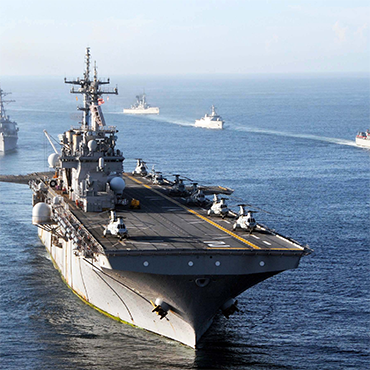DOD announces long-awaited NGEN contract

The new network program, which will serve more than 800,000 users, will replace the aging Navy-Marine Corps Intranet.

A team led by Hewlett-Packard Enterprise Services will be providing the Navy with the massive bundle of IT services and infrastructure known as the Next Generation Enterprise Network.
The initial value of the contract is more than $321 million. If four one-year options are exercised, the contract would reach a cumulative value of close to $3.5 billion.
"We were looking for affordability, the ability to bring innovation to the system, to [modernize] the system as technology moves forward," said Sean Stackley, assistant secretary of the Navy for research, development and acquisition. "We were looking for greater command and control of the network, and also the opportunity to continuously compete going forward. Bottom line, we got what we wanted."
The announcement came late on the afternoon of June 27, after multiple delays and a long, sometimes-bumpy road.
NGEN will replace the aging Navy-Marine Corps Intranet, the largest computer network outside of the public Internet. The 12-year-old program, originally awarded in 2000 as a contract to EDS, now Hewlett-Packard, is the largest outsourced federal IT program. The original contract ended in 2010, with HP operating NMCI since then under a series of continuity-of-service contracts.
"The original contract was historic, consolidating thousands of networks into one centralized network with standardized technologies and enterprise-wide oversight," said Victor Gavin, program executive officer-enterprise information systems. "NGEN, in my mind, is just as significant."
The move marks a huge step for the Navy, but one that – if everything goes right – will be minimally noticed on the surface level. Officials said that particular care has gone into meticulously mapping the entire network so that operations remain uninterrupted as services are switched over.
NGEN will serve nearly 2,500 Navy and Marine Corps locations worldwide, from major bases to single-user sites, and will provide services for 400,000 seats and more than 800,000 users. The initial work is expected to be completed in June 2014. If the options are exercised, the work will continue through June 2018.
Up until the announcement it was unknown if the NGEN contract would be awarded to a single provider or to more than one. The project was split into two main sections, transportation services and enterprise services, to allow for the possibility of multiple awards.
"We created contract line items or segments and opened those up to bid across industry, but that did not preclude a team from coming in and bidding on the segments," as happened with the HPES team, Stackley said. "The RFP was structured so that separate teams or separate companies could win segments, but the winning bid was the HP [team providing all] the services."
HPES is sharing the business with other large firms, however. The team includes
AT&T Government Solutions; IBM Global Business Services Federal; Lockheed Martin Services; and Northrop Grumman Systems.
The launch of NGEN marks a major shift for the Navy, as the service finally takes back full control of its network. Under NMCI the network and its infrastructure were owned and run by the private sector. Under NGEN, the property is owned by the government but contractor-operated. Separately, the Marine Corps will operate as government-owned and government-run.





